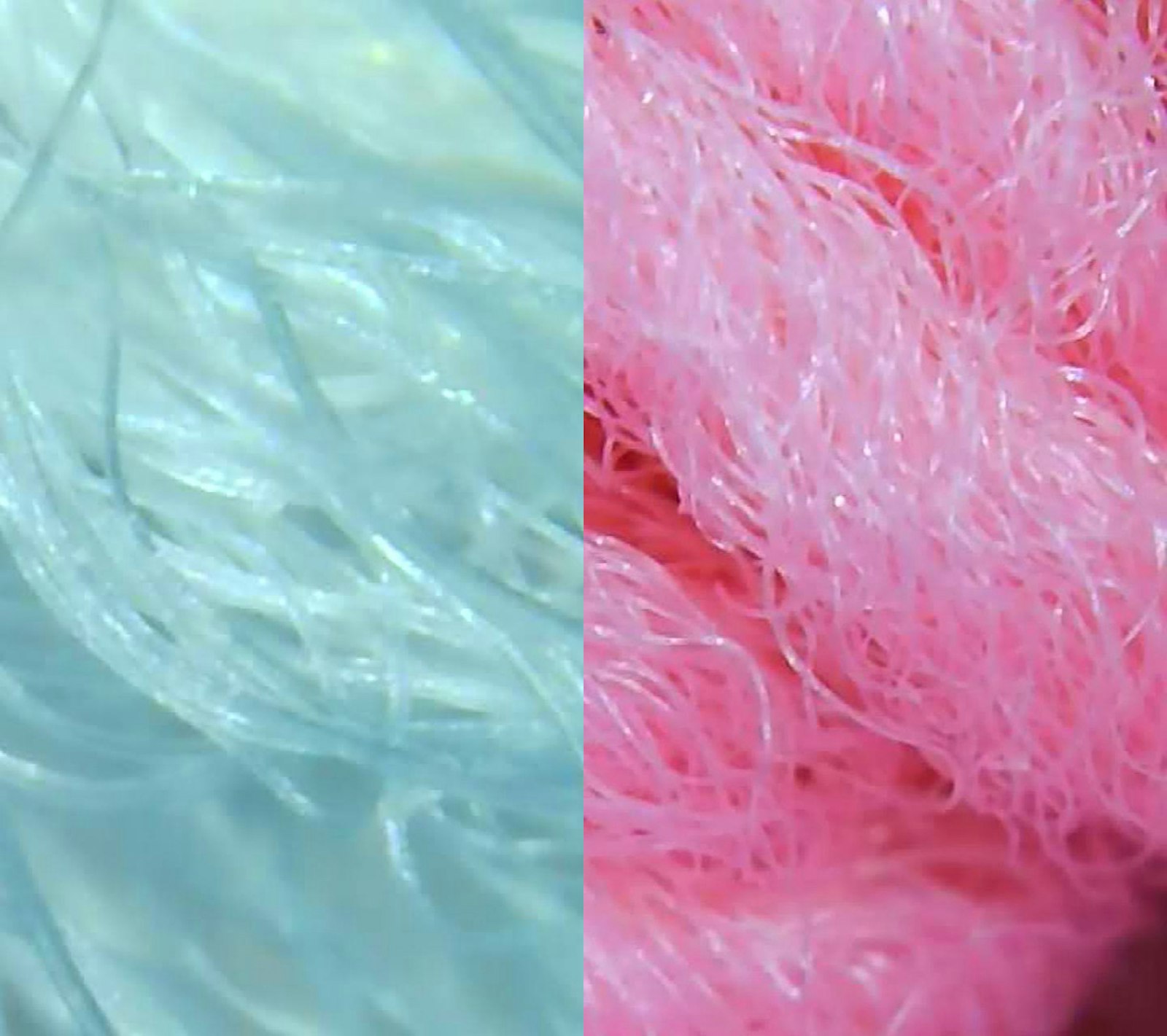There are few debates as polarizing in the textile community as the evergreen synthetic vs. natural fiber argument, especially for baby items. Setting aside the environmental issues, let’s consider the end user. Are you making it for a present-day child or their children’s children? If your only interest is in clothing one child, while providing convenience for the parents, then acrylic yarn is a perfectly legitimate choice. But if you want to make an heirloom, you might want to consider a different option.
The biggest problem with synthetic fibers from a preservation standpoint is that we don’t know enough about them. The first true synthetics weren’t developed until 1935. In the world of conservation, that’s barely the blink of an eye. We have centuries of knowledge about natural fibers and samples dating back thousands of years.
Not all yarns are created equal.
Companies make their synthetic yarns and fabrics in different ways. In the past 85 years, methods of making those fibers have changed drastically. This means the yarns can age in unpredictable ways. Nylon, acrylic, and polyester can all go by a variety of names, with their general umbrella covering a variety of materials. For example, bamboo can be turned into fiber in three ways—two of which are a chemical process, essentially turning bamboo pulp into a synthetic fiber (rayon). The last form, bast fiber from bamboo, is processed without chemicals much like linen and is therefore a natural fiber. Now, go to a yarn shop and pick up the first ball of bamboo or bamboo blend yarn you find. Do you know which one it is?
Synthetics don’t absorb water the way natural fibers do, making them almost impervious to mold or other water damage. However, this also means they’re static magnets that attract dirt and debris, which can work deep into the fibers.
Direct sunlight is also a problem, weakening the material through light and heat and accelerating the biggest danger: off-gassing. Off-gassing is the release of chemicals into the air as an object breaks down. While this happens to most objects over time, in the case of synthetic fibers, these gases are more acidic, which leads to further damage to the object and surrounding objects, and are petroleum-based. This process can cause a change in the texture or color of some textiles and is accelerated by exposure to heat. These items can also shed microfibers like specks of plastic “dandruff.”
Proper care and storage are the keys to preservation.
Is it possible that in another hundred years, we’ll have enough examples of these fibers to better judge how to preserve them? Yes. Is there potential for them to last decades or even centuries with little to no deterioration? Yes. However, we aren’t there, yet. So, if you are looking to craft an heirloom piece, I suggest working with natural fibers or blends rather than a 100 percent synthetic.
Resources
- Carney Almroth, B.M., Linn Åström, Sofia Roslund, Hanna Petersson, Mats Johansson, and Nils-Krister Persson. “Quantifying shedding of synthetic fibers from textiles; a source of microplastics released into the environment.” Environmental Science and Pollution Research, 25, 2018.
- Nyak, Lopamudra and Siba Prasad Mishra. “Prospect of bamboo as a renewable textile fiber, historical overview, labeling, controversies and regulation.” Fashion and Textile, 3, 2, 2016.
- Parkes, Clara. The Knitter’s Book of Yarn: The Ultimate Guide to Choosing, Using, and Enjoying Yarn. New York: Potter Craft, 2007.
Sheena Pennell is a novelist and textile nerd from Washington State. She trained in textile conservation in Italy and knits copious numbers of hats, all of which are covered in cat hair.

